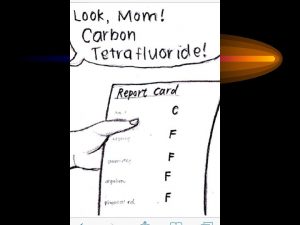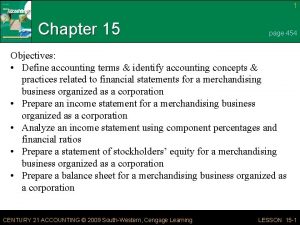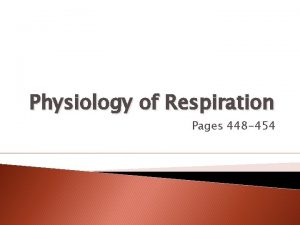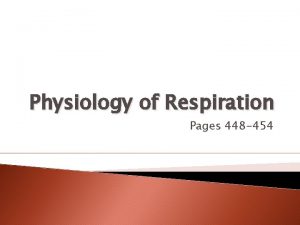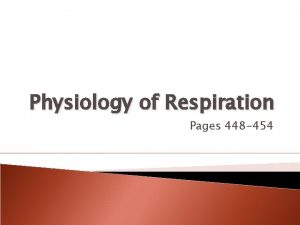Climate Chapter 17 Page 452 477 Pages 454

























- Slides: 25

Climate Chapter 17 Page 452 – 477

Pages 454 – 455 v What is Climate? is the difference between weather & climate? v Weather = the condition of the atmosphere at a particular time & place. • Weather conditions vary from day to day. v Climate = the average weather conditions in a certain area over a long period of time. • Climate is determined by two main factors, temperature & precipitation. v Why are climate so different around the world or even just across the country?

Page 455 v Latitude = the distance north or south, measured in degrees, from the equator. • The higher the latitude is the colder the climate is. v Why are there such temperature differences at different latitudes? • The answer has to do with solar energy. Solar energy heats the Earth. Latitude determines the amount of solar energy a particular area receives.


Page 456 Seasons & Latitude v During the winter months the Southern Hemisphere has higher temperatures & longer days because it tilts toward the sun & receives more direct solar energy. The Northern Hemisphere has lower temperatures & shorter days because it tilts away from the sun. v During June & July the Northern Hemisphere has warmer temperatures & longer days because it tilts toward the sun & receives more direct solar energy for a longer amount of time. However, the Southern Hemisphere has cold temperatures & shorter days because it is tilted away from the sun.


Page 457 Prevailing Winds v Prevailing winds = winds that blow mainly in one direction. v These winds influence an area’s moisture & temperature. • They carry moisture if they form from warm air. (precipitation occurs when winds are warm & moist) • They will be dry if they form from cold air. • The amount of moisture in prevailing winds is also affected by whether the winds blow across land or across a large body of water.

Page 458 v Elevation Geography = the height of surface landforms above sea levels. (affects temperature) v Mountains force air to rise. The air cools, as it rises, releasing moisture as snow or rain. The land on the windward side of the mountain is usually green & lush due to the wind losing its moisture. v After dry air crosses the mountain, the air begins to sink, warming & absorbing moisture as it sinks. The dry conditions created by the sinking, warm air usually produce a desert. This side of the mountain is in a rain shadow.

Page 459 Ocean Currents v Because of water’s ability to absorb & release heat, the circulation of ocean surface currents has an enormous effect on an area’s climate. v Surface currents = stream-like movements of water that occur at or near the surface of the ocean (they can be cold or warm) v The surface temperature of water affects the temperature of the air above it. v Remember our discussion of England.


Page 460 Climates of the World v Biome = a large region characterized by a specific type of climate & the plants & animals that live there.



Page 461 The Tropical Zone v Tropical zone (tropics)= warm zone located around the equator; extends from the tropic of Cancer to the tropic of Capricorn. (contains 3 biomes: tropical rain forest, tropical desert, & tropical savanna) Tropical Rain Forest v Warm & wet; receive strong sunlight year-round, little differences in seasons; contain the greatest number of plant & animal species of any biome; soil is poor

Page 462 v Less Tropical Deserts than 25 cm of rainfall per year; (cold/hot) v Adapted: plants live with little to no water v Majority of hot deserts are tropical deserts v Soil: poor; which makes it hard to break down dead organic matter v Deserts are caused by cool sinking air masses v Daily temperatures in tropical desert vary from very hot daytime temperatures (50 o. C) to cool nighttime temperatures (20 o. C) [Winters are usually mild]

Page 463 Tropical Savannas (grasslands) v Dominated by tall grasses, with trees scattered here & there. v Usually very warm, with a dry season that lasts 4 to 8 months followed by short periods of rain. v Soil: poor, until there is a fire which leaves it rich for a short time. v Adapted: Fire – Many plants use it to reproduce

Page 464 The Temperate Zone v Temperate zone = temperatures tend to be moderate; 4 biomes: temperate forest, temperate grassland, chaparral, & temperate desert. Temperate Forests v High amounts of rainfall & seasonal temperature differences v Deciduous = trees that lose their leaves in the winter (largest temperate forest are made up of these trees) v Soil: Fertile because of the high organic content contributed by decaying leaves that drop every winter. v Evergreens = trees that keep their leaves year-round

Page 465 Temperate Grasslands v Occur where too little rainfall for trees to grow v Grasses are the most common type of vegetation v Fertile soils (often plowed to make farms) v Chaparrals v Cool, wet winters & hot dry summers v Vegetation: mainly evergreen shrubs (short, woody plants with thick waxy leaves) v Soil: poor v Adapted to fire

Page 466 Temperate Deserts v Receive less than 25 cm of rainfall every year v Tend to be cold deserts (very dry) v Can be very hot in the daytime but are always extremely cold at night The Polar Zone v Polar zone = have the coldest temperatures v Temps in the winter are below freezing, in the summer it is still chilly v Location: Northernmost & southernmost climate zones.

Page 467 v Next Tundra to deserts this is the driest place on Earth v Winter: Cold with almost 24 hours of night v Summer: Short, cool with almost 24 hours of daylight; only the top meter of soil thaws, underneath the thawed soil lies a permanently frozen layer of soil, called permafrost. • Permafrost prevents the top soil from draining which makes it an excellent breeding ground for insects (many birds migrate to the tundra during the summer to feed on the insects)

Page 468 Taiga (Northern Coniferous Forest) v Winter: Long & cold; frozen soil v Summer: short & warm v Plants: evergreen trees, mosses & lichens v Soil: acidic Microclimates v Climate & biome can be influenced by local conditions v Microclimates = small regions with unique climate characteristics v Elevation, cities

Pages 469 – 470 Changes in Climate v There have been changes in the climate throughout history Ice Ages v Scientists have found evidence of many major ice ages throughout the Earth’s geologic history. v Ice age = a period during which ice collects in high latitudes & moves toward lower latitudes. v During an ice age, there are periods of cold (glacial periods), when much of the Earth’s surface is covered by ice, & periods of warmth (interglacial periods), when the ice melts.

Pages 470 – 471 Causes of Ice Ages v Many theories about what causes Ice Ages. • Milankovitch theory – caused by the Earth's orbit & the tilt of the Earth’s axis. • Volcanic eruption – ash blocks the sun’s warmth which drops the Earth’s temperature • Changes in the sun’s energy output

Pages 472 – 473 Global Warming v Global warming = a rise in average global temperatures that can result from an increase in the greenhouse effect Greenhouse Effect v Greenhouse effect = the Earth’s natural heating process, in which gases in the atmosphere trap heat. v Scientist hypothesize that the rise in global temperatures is due to: v increase in CO 2 (released because of the burning of fossil fuels) v Deforestation – clearing of forests

Page 473 Consequences of Global Warming v Flooding of low-lying areas v Icecaps to melt v Raising the sea levels v Areas with little rain fall would receive even less v Areas with mild, wet weather would become dry & no longer be good for cropland v Areas with harsh weather would become milder & then be good for growing crops.
 Printed pages vs web pages
Printed pages vs web pages Is the standard page description language for web pages
Is the standard page description language for web pages Https://forms.office.c
Https://forms.office.c Climate change 2014 mitigation of climate change
Climate change 2014 mitigation of climate change Vdv454
Vdv454 Ece 454
Ece 454 Kj 454
Kj 454 Ece 454
Ece 454 Ars 46-454
Ars 46-454 Cmpt 454
Cmpt 454 Cmpt 454
Cmpt 454 Ist 454
Ist 454 452 en yakın yüzlüğe yuvarlama
452 en yakın yüzlüğe yuvarlama Testo 454
Testo 454 Opa 454
Opa 454 Ece 454
Ece 454 Ece 454
Ece 454 Ece 454
Ece 454 Apa heading format
Apa heading format Mole anto
Mole anto Cse 452
Cse 452 Ip de la nasa
Ip de la nasa Cse452
Cse452 Cse 452
Cse 452 Cse 452
Cse 452 Cse452
Cse452



















